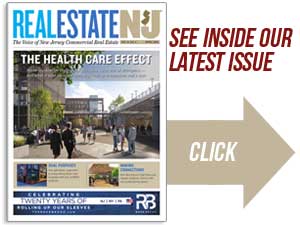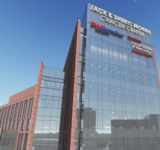Our July cover story takes a look at the growth of medical retail and all of the nuances that come along with it. For one thing, there seems to have been a perfect storm that paved the way for this movement: Retail was hurting after the Great Recession, while the Affordable Care Act expanded the insured population and changed how health care was delivered. As you might guess, New Jersey was impacted by these forces as much as any other market.
Editor’s Note
Hear directly from Editor Joshua Burd as he brings you the highlights of this month’s issue of Real Estate NJ and his observations from recent interviews.
Editor’s note: Mastering the middle
Even before I started covering commercial real estate full-time, I still came across development stories during my earlier days as a metro reporter in Central Jersey. One of those stories came when I was covering Bound Brook, a borough in Somerset County that had a tired downtown and a history of being battered by flooding from the Raritan River. But in early 2011, we learned that a developer named George Capodagli was interested in building the type of new apartments that were starting to crop up elsewhere in the state.
Making strides
No matter how much I write about commercial real estate, it’s never enough for me to fully appreciate the connection between a developer and one of his or her buildings. That said, Peter Sudler summed it up well enough earlier this year, when he spoke about demolishing a vacant, antiquated office building to make way for a new industrial development.
A growth industry in the making
Insiders say that now is the time to discern which municipalities will be receptive to the prospect of legalized recreational cannabis, if and when it becomes a legal industry in New Jersey. That prospect is likely many months from being a reality, if not more, but the concept has the support of Gov. Phil Murphy and several well-known lawmakers.
High hopes for life sciences
For all the time we’ve spent highlighting New Jersey’s glut of sprawling, vacant corporate campuses, it’s easy to lose sight of just how many of them have been rescued in recent years by some of the state’s boldest and most inventive developers. Those success stories are worth telling, which is why we often do at Real Estate NJ. But there are underlying trends or nuances in some of those projects that don’t get as much attention on a day-to-day basis. Like how a crop of innovative, lesser-known biotech and pharmaceutical firms are backfilling space at the former research campuses of Sanofi and Hoffmann-LaRoche, helping to stabilize those sites as their new owners pursue larger redevelopment plans.
A fast start to a busy year
As we’ve been reminded over the last two years, industry leaders have long feared that federal tax reform could spell the end of many of the loopholes enjoyed by developers and investors. It became clear last fall that benefits such as the 1031 exchange would live to see another day, but as we came to learn, that was just the beginning of how the commercial real estate sector would stand to gain under President Trump’s tax overhaul.
Editor’s note: Looking to the future
Real estate is in transition in virtually every other market across the country. But there are forces at play that are distinct to New Jersey or at least especially pronounced here, from e-commerce and the apartment boom to the need to reinvent the suburban office park. And we’ve sought to highlight those trends every day and every month, while explaining how those forces impact pricing, public policy and technology. You can expect nothing less in our January issue and in our special Market Forecast section, which features thoughtful, well-informed predictions from some of the top developers, professionals and other experts in the field.
Coming soon: Industry Roundups from Real Estate NJ
In the days and weeks ahead, we will introduce a new addition to Real Estate NJ aimed at zeroing in on the major asset classes and service sectors in the Garden State. Known as Industry Roundups, the new e-blasts will highlight the top headlines and stories in each field, giving you a chance to catch up on all the latest news in a way that’s tailored to a specific part of the industry.
Editor’s note: After a busy year, a look at what’s to come
Ask anybody in the real estate business and they’ll most likely agree: Being busy is a good thing. We couldn’t agree more as a publication that covers this industry and thrives on all of the deal making, construction activity and other bits of news that help us bring you a monthly magazine and a daily newsletter. The market has been so busy that I’m not quite sure where the time has gone, yet here we are as we prepare to close out the first year of Real Estate NJ.


















